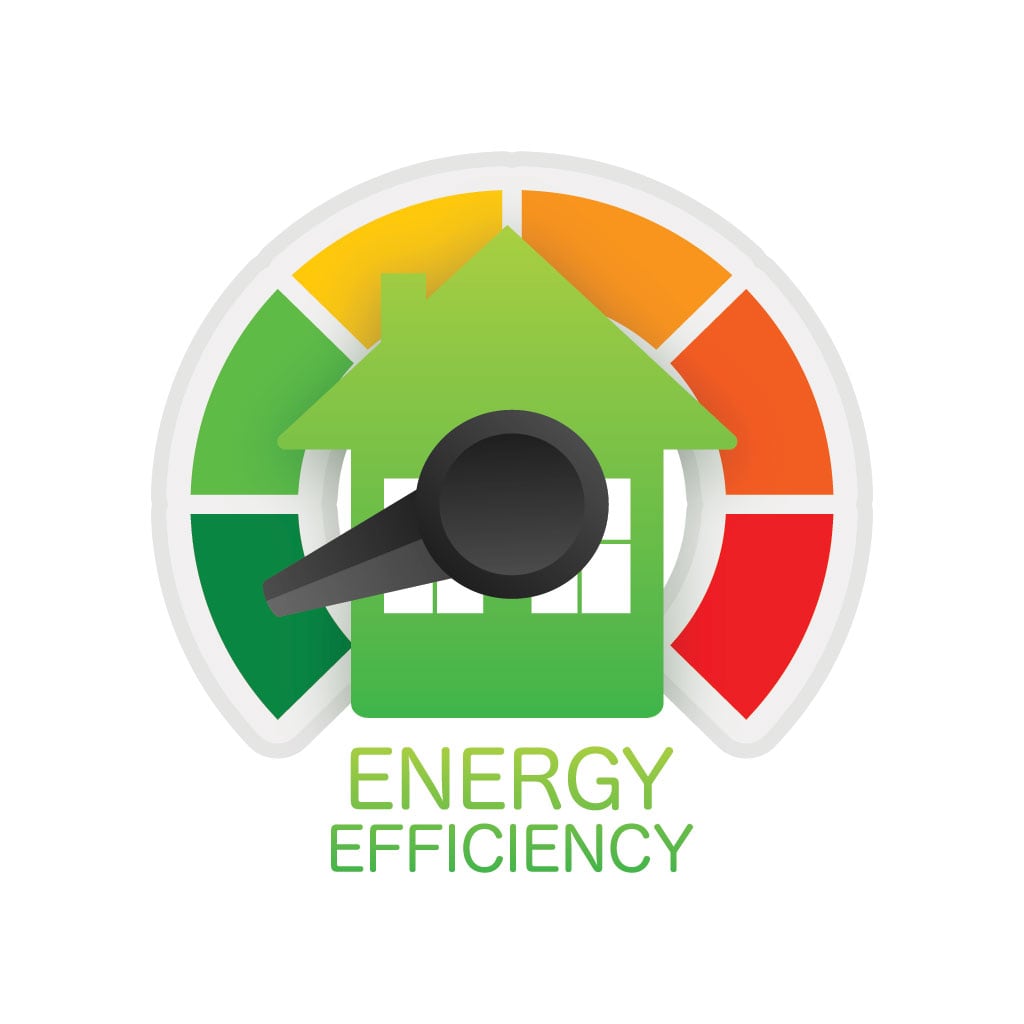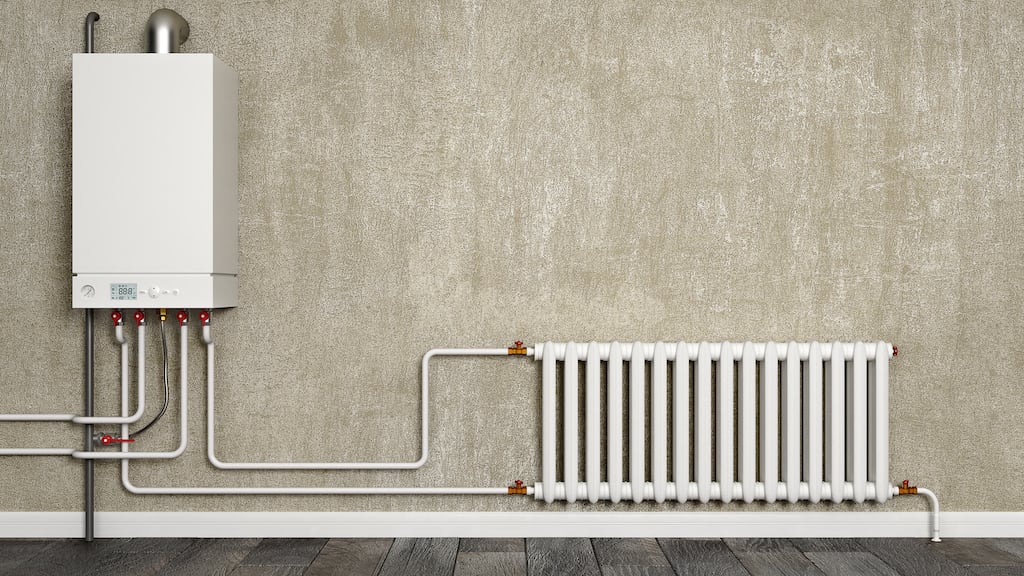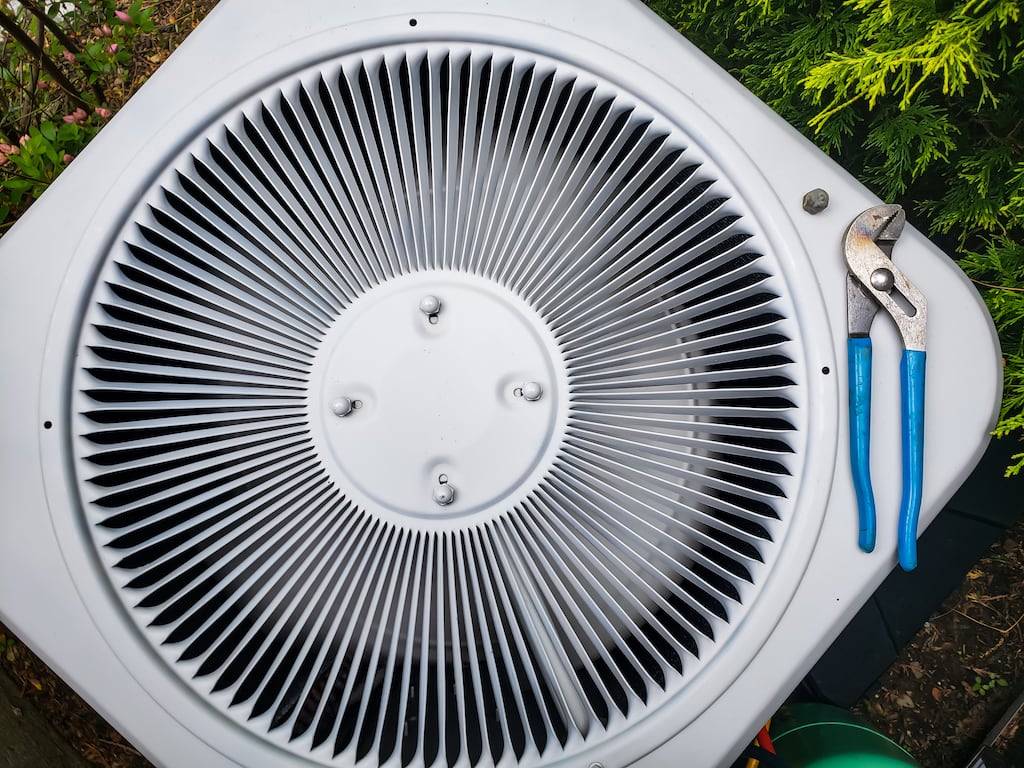
Understanding Heating and AC Repair Terminology
As a homeowner, it’s essential to understand the basics of your heating and air conditioning systems. Occasionally, you may encounter issues with your HVAC unit that require repair, and when that happens, you’ll need to speak the language of HVAC technicians. Understanding heating and AC repair terminology can help you communicate effectively with your technician and better grasp the nature of the problem. In this article, we’ll delve into the most common heating and AC repair terms and explain their meanings, so you can be prepared the next time you need to talk to an HVAC professional.
HVAC Terms and Definitions
Air Conditioner
An air conditioner is a device used to remove excess heat and humidity from a space. A room air conditioner, often installed on a window or wall, is a unit that conditions a room without using ducts. A central air conditioning system employs fans and vents to distribute cooled air from a central unit throughout your home.
Annual Fuel Efficiency Ratio (AFUE)
The Annual Fuel Utilisation Efficiency (AFUE) rating, developed by the Department of Energy in 1975, provides consumers with a consistent and accurate method for comparing the performance of various heating systems.
An annual fuel utilization efficiency (AFUE) rating measures how efficiently a furnace or boiler uses fuel over time. In other words, what proportion of fuel is converted into heat by the unit? This rating is not intended to be taken as an exact indication of the furnace’s efficiency but rather as a point of reference for contrasting the performance of various models. In the same way SEER ratings serve as a benchmark for air conditioners, AFUE does the same for heaters.
For instance, a furnace with an AFUE rating of 80% converts 80% of the fuel into heat while exhausting 20%. Over time, both AFUE and SEER ratings decline. If your unit’s AFUE rating is less than 80%, call a heating and AC repair professional to help you upgrade to a more efficient model.
Air Handler
An air handler is similar to a furnace in many ways; it even looks like a furnace because it is a cased unit. The air handler is an indoor equipment that most homes have, and it contains evaporator coils, a blower, and ventilation and filtering components. It is an integral part of your HVAC system. Air handlers often connect to preexisting ductwork, which circulates conditioned air throughout your home and returns it to the unit. After the evaporator coils remove the heat from the air, the air handler distributes the cooled air throughout the ducts in your home.
How does an air handler differ from an AC? The primary distinction is that an AC removes heat from the air, and an air handler distributes the cooled air throughout the house. The air conditioner and the air handler have coils, so people get them mixed up. However, an air handler cannot function without an AC.
British Thermal Unit
If you’re looking for a new air conditioner, you’ve probably heard or seen the term BTU. A BTU is a unit of measurement for an HVAC system’s efficiency. Simply put, one British Thermal Unit (BTU) equals the energy needed to bring one pound of water to a boil. In the context of air conditioning, however, it refers to the efficiency with which indoor air heat is eliminated.
Compressor
The compressor is responsible for compressing and circulating the refrigerant throughout the system, which in turn absorbs heat from the indoor air during the cooling cycle or releases heat into the air during the heating cycle. The compressor is often termed the “heart” of the HVAC system since it drives the entire cooling or heating process. When the compressor fails or malfunctions, it can reduce system efficiency and increase energy consumption. Proper maintenance and timely repairs are critical to ensuring that your compressor operates efficiently and effectively for years.
Condenser
The condenser is the external part of an air conditioner, and its job is to transfer heat from the indoors to the air outside.
Condenser Coil
Your cooling system contains two coils, one of which is a condenser coil; these coils cooperate to complete the heat exchange cycle. The condenser coil is located in the outdoor unit and is where the refrigerant discharges the heat it has absorbed from within the house. It releases the heat the evaporator coil absorbs into the surrounding environment, typically the outdoors. By exchanging warm air for cold, your HVAC system can distribute the latter throughout the house. The outdoor unit needs at least two feet of space around it for adequate ventilation.
Dehumidifier
These are mechanical devices that remove moisture from the air. The process involves cooling air to the point where water vapor condenses into liquid, which is drained away.
Ductwork
An HVAC system is analogous to the circulatory system in your body, with the thermostat serving as the brain, the AC as the heart, and the ductwork as the blood vessels. In the same way our bodies have veins and arteries, buildings also have supply and return air ducts. Your home’s return air ducts carry air that hasn’t been conditioned to the AC while the conditioned air is sent throughout the home via supply air ducts. If your home’s ductwork isn’t set up correctly, your HVAC system will have difficulty doing its job.
Carbon monoxide is a dangerous byproduct of home heating systems and is often sent to the outdoors via ductwork. If the pipes and vents in your home are blocked or clogged, the gas could leak into the air and endanger your family’s health.
Fortunately, carbon monoxide leaks may be avoided with regular maintenance. A heating and AC repair expert can check your heating system and ensure the ducts are debris-free. You can help your equipment run smoothly year after year with regular preventative maintenance and save money on costly repairs by planning.
EER
A cooling system’s Energy Efficiency Ratio is calculated by dividing the cooling energy output (in BTU) by the electrical energy input (in watts) at a standard temperature and load. The energy efficiency ratio (EER) decreases when the temperature differential between the indoors and outdoors widens. An air conditioner with a high Energy Efficiency Ratio (EER) delivers substantial cooling for the energy it consumes.
Photo By DG-Studio at Shutterstock
Energy Star
To be awarded the ENERGY STAR, products must adhere to stringent standards for energy efficiency established by the United States Environmental Protection Agency. You can improve your home’s comfort and energy efficiency by having a heating and AC repair expert install an HVAC system that has earned the ENERGY STAR label in your home.
Evaporator Coil
The evaporator coil of your air conditioner is responsible for pulling heat out of the air in your home. It’s usually found inside the air handler or attached to the furnace. Together with a condenser coil, it facilitates the transfer of heat that cools the air.
Evaporated refrigerant is pumped from the compressor to the metering device in liquid form and subsequently into the evaporator coil. The refrigerant dissipates the heat in the evaporator, which is exposed to air as it moves over the coil, thanks to the blower fan.
Fresh Air Intake
Fresh air intake refers to bringing outside air into a building’s ventilation system to improve indoor air quality. It is a vital component of HVAC systems, especially in facilities designed to be airtight, such as energy-efficient homes and commercial buildings.
Fresh air intake helps to replace stale indoor air with fresh, oxygen-rich outdoor air, improving air circulation and maintaining a healthy and comfortable indoor environment.
Grille
The grille is the covering over a duct opening, which is usually rectangular and has multiple parallel openings through which air can be sent to an area that needs cooling or heating. The grille serves to channel airflow and block debris from entering the system.
Heat Exchanger
A heat exchanger, installed within the furnace, transfers the heat generated to the ambient environment.
Heat Pump
A heat pump is an essential HVAC system component usually installed outside a home. It has the cooling capacity of a central air conditioner and the heating capacity of a furnace. A heat pump can heat your home in the winter by removing heat from the outside air and transferring it inside. It can also cool your home in the summer by removing heat from the inside air. These devices run on electricity and use refrigerant to transport heat, making them useful year-round.
Heating Coil
The heating coil converts electrical energy into heat distributed throughout the house.
HVAC
HVAC is an abbreviation for “heating, ventilation, and air conditioning.” Air purification and humidity regulation are also standard in today’s systems.
MERV
A filter’s “minimum efficiency reporting value” (MERV) rating indicates how well it traps and keeps out particles in the air. A filter with a higher MERV rating will capture more particles.
However, there is also a downside to this. Higher MERV-rated filters have denser filtering media, requiring more effort to move air through the filter. Extremely powerful HVAC fans are needed to force air through filters with a high MERV rating. Contact a heating and AC repair expert to help you find the right filter for your HVAC system.
Refrigerant
Refrigerant can be found in a gaseous or liquid state. It is essential to an HVAC system’s operation since it removes the ambient heat and transforms it into a cold airflow in conjunction with the other parts of your air conditioner.
The refrigerant’s mission is to move from its low-pressure gas state to its high-pressure liquid state as it makes its way to the various components of the air conditioner—this process of heat absorption and subsequent release aids in delivering cool air throughout your home.
Condensation occurs as the refrigerant moves from the indoor to the outdoor unit, forcing the unit to cool. When the refrigerant enters the inside unit, its lower temperature promotes evaporation when it comes into contact with the warmer air. Fans and air ducts produce and distribute a continuous flow of cool air across a room.
Throughout the lifetime of your air conditioning system, the refrigerant level will remain constant because the refrigerant cycle is perpetual. But this is predicated on the fact that your system has no leaks. If you suspect your HVAC system has a refrigerant leak, call a heating and AC repair expert.
Refrigerant Lines
An HVAC system has two refrigerant lines made of copper. One is the suction line, which is larger, more insulated, and carries the cool refrigerant gas. The liquid line, which is a smaller, uninsulated line, transports the warm refrigerant liquid.
Seasonal Energy Efficiency Ratio (SEER)
Your air conditioner’s efficiency is quantified by its seasonal energy efficiency ratio. It’s calculated as follows: cooling output for the cooling season divided by electrical energy input for the cooling season. This metric compares your heat pump or AC’s overall cooling output (in BTUs) to the total energy output (in watt-hours) used during the same period. If you want to save money on your monthly energy bills, look for an air conditioner with a high Seasonal Energy Efficiency Ratio (SEER).
Zoned or Split System
This is a type of centralized HVAC system that lets you set individual temperatures in separate zones. Instead of a duct system, the device uses discrete wall-mounted units to provide temperature control throughout the house. It consists of an outdoor unit, several indoor units, and a thermostat.
Thermostat
The thermostat sends a signal to the HVAC system, instructing it to heat or cool the space to the selected level. When you adjust the thermostat, the HVAC system blows warm or cold air into your home.
Thermostats used to include mercury because the lever used to control the temperature was activated by a coil and a mercury switch. On the other hand, modern thermostats use bimetallic strips to control the temperature, which then links to circuit boards that communicate the adjustments throughout the device.
Contact One Hour Air Conditioning & Heating Now That You’re an HVAC Pro
Homeowners must understand heating and AC repair terminology to communicate effectively with HVAC professionals and make informed decisions about their HVAC systems.
If you’re experiencing issues with your heating or air conditioning system, don’t hesitate to contact One Hour Air Conditioning & Heating of Fort Worth. Our expert technicians have the knowledge and experience to diagnose and repair any HVAC problem. We’re always happy to answer any questions about HVAC terminology or the heating and AC repair process. Contact us today to schedule an appointment.
See our most recent blog on this topic here.
Check out our customer reviews here.
Photo By New Africa at Shutterstock
Types of Heating Systems Your Trusted Heating and AC Repair Technician Can Install at Your Home
What makes a home is the security, comfort, and family that is in a family. Without these aspects, your home is only a building you live in. One significant aspect that contributes to the comfort of your home is your ability to control the temperatures no matter the time of day. However, choosing an ideal system that suits your home’s needs is challenging. Fortunately, even with the many confusing choices in the market, an expert heating and AC repair technician will guide you to ensure your home gets the best system. This article will explore the different options for heating systems in the market and their features.
What is an HVAC?
An HVAC, commonly called a heating, ventilation, and air conditioning system, allows you to control your home’s air quality and temperature. This system has two primary uses; first, you can heat your home during cold winter. Conversely, you can use the HVAC system to cool the temperatures in your home during the hot summer months. Notably, there are a variety of heating methods that an HVAC uses. These methods include heat pumps, boilers, and hot air furnaces. The system supplies heated air throughout your home through vents and air ducts.
To control the temperature to your desired level, an HVAC system has a thermostat with different temperature calibrations. Therefore, you can raise the temperature to your liking or lower it during cold months. An HVAC system will also help you to excess moisture and humidity from your indoor air, eliminating the ideal conditions for mold growth. However, you can only enjoy all the best services from an HVAC system by having a qualified heating and AC repair technician install it.
Types of HVAC system
Forced Cooling or Heating Systems
A forced cooling/ heating system is a type of HVAC system that uses a fan to distribute conditioned air throughout a home. Although forced heating/cooling systems operate like any other HVAC system, these systems are ideal for heating large spaces such as homes and offices. This is because forced cooling/heating systems distribute cool or warm air evenly and fast through the assigned area.
In most cases, forced cooling/heating systems are powered by fuel sources such as propane, natural gas, electricity, and oil. However, propane and natural gas are the primary fuel sources for heating, while electricity is used for cooling. The choice of fuel used in these systems mostly depends on the cost and availability of the different fuel types in the installation area.
The cooled/heating system uses a network of ducts to distribute conditioned air from the air conditioner or furnace to your home. A heating and AC repair technician will lay down the distribution system behind walls or the ceiling during the system’s installation if your home does not have an existing one. The ducts are mostly made of plastic or metal.
Pros of a Forced Cooling/Heating System?
Some of the significant advantages of installing a cooling/heating system in your home include the following;
- Even and Fast Distribution – This type of HVAC system will evenly distribute the conditioned air from the system in your home and all your rooms. In addition, the system takes less time to provide your home with the required temperature once turned on.
- Flexible Fuel Options – A forced cooling/heating system has various fuel options. Therefore, a heating and AC repair technician will pick the cheapest in your area to minimize running costs.
- Improves Air Quality – By removing moisture from your supply air, this system eliminates the possibility of the formation of pollutants such as mold in your home. Consequently, you are assured of high air quality for you and your family.
Cons of a Cooling/Heating System
- Expensive – Apart from the initial buying cost, the cooling/heating system is costly to install since it needs ducts. Installing ductwork by a professional heating and AC repair technician can be expensive. In addition, the maintenance cost of the ductwork is an additional cost.
- Noisy – The operation of a cooling/heating system includes a fan that can be noisy, thereby interfering with the tranquility of your home.
- Suitability – Unlike most heating systems, the cooling/heating system is not all-rounded. Therefore, this makes it unsuitable for specific areas, such as homes with high ceilings and open floor plans.
Electric Resistance Heating System
Are you looking for a heating system designated for a small area or a single room in your home? The electric-resistant heating system is an ideal choice for you. The electric-resistant heating system is primarily used in small buildings, residential homes, and offices.
This type of HVAC system uses electricity as its main fuel source. Therefore, it is easy to install in homes since it does not need a separate fuel source. On the other hand, its distribution system uses electrical-resistant elements to generate heat. The heat is then circulated in your home through forced air systems or convention.
Pros Of An Electric-Resistant Heating System
- Heats Small Spaces – The first advantage of this type of HVAC system is that it can be used in small areas such as a single room. Therefore, this would be a good addition if you want to add to your central heating system.
- Fuel Type – The other significant advantage of an electric-resistant heating system is that it only uses electricity as its fuel source. Therefore, a technician can easily install it in your home.
- Control – A thermostat can easily control this HVAC system to meet your home’s temperature requirement.
Cons Of An Electric-Resistant Heating System
- Expensive to operate – The electric-resistant heating system can be costly, especially since it does not have an alternate fuel source. Therefore, you cannot substitute the high cost of electricity with anything else.
- Not suitable for large spaces – Unlike other HVAC system types, this type can only heat small areas. Therefore, it is a suitable choice for a heating system for your entire home.
- Efficiency – The electric-resistant heating system is less efficient than other systems.
Photo By vipman at Shutterstock
Traditional Boiler and Radiator System
The traditional boiler and radiator system has been in use for many years. The system uses a boiler to heat water circulated by pipes and a radiator to give your home warmth. The boiler heating system is ideal for large buildings such as hospitals and schools. In addition, this HVAC type is a perfect option for conventional homes, which may lack the infrastructure and space for a modern HVAC system.
The traditional boiler and radiator system’s fuel source vary between oil, natural gas, electricity, and propane. Therefore, if you choose this as the ideal heating system for your home, the heating and AC repair technician will choose the best fuel type for you, depending on the cost and availability of the fuel in your area.
For the distribution system, this type of heating system uses pipes to ferry the water heated by the boiler to radiators in your home. Consequently, the radiator then releases heat into your supply air, thus warming your home.
Pros Of The Traditional Boiler And Radiator System
- Fuel – The conventional boiler and radiator system has a variety of fuel choices that can power its operation. Therefore, you can choose the ideal fuel depending on your location’s price and availability.
- Reliable – This type of HVAC system is reliable and is used to heat large buildings. Therefore, the traditional boiler and radiator system can efficiently heat your home to your liking.
- Effective – This heating system has proven longevity and effectiveness due to its many years in the market.
Cons of A Traditional Boiler And Radiator System
- Space – The traditional boiler and radiator system requires ample space to install the radiators and the boiler. Therefore, this may not be suitable for your home if you have limited space.
- Expensive – Although this HVAC type has different fuel sources, it can be costly to install due to all its requirements. In addition, the maintenance cost of a traditional boiler and radiator system is also high.
- Low Efficiency – Compared to other systems, the traditional boiler and radiator system is less efficient than modern heating systems.
Gravity Air Furnace Systems
This heating system uses natural airflow to provide heat in your home. Therefore, this system is ideal for homes with large open floors and high ceilings. This system has various fuel sources, including oil, natural gas, and propane. The system has a large burn chamber to heat the air to the needed temperatures. The hot air is then circulated through a network of registers and ducts. Therefore, the distribution system is generally comprised of ducts. A heating and AC repair technician will install the ductwork in your home’s attic or ceiling.
Pros Of A Gravity Air Furnace System
- Cost-effective – Since the gravity air furnace system is ideal for high ceilings and open floor plans, it can be cost-effective and efficient if you have a conventional home.
- Fuel variety – The fuel sources that a gravity air furnace system uses to power its operation are readily available and can be sourced from local providers. Therefore, you can choose the best fuel that suits your home.
- Easy Installation – A qualified heating and AC repair expert can easily install and maintain this system due to its straightforward operation. It needs no additional gadgets, which makes its installation seamless.
Cons Of A Gravity Air Furnace
- Noisy – The gravity air furnace system can be noisy during operation, interfering with your home’s tranquility. In addition, this system can cause the conditioned air to flow in or out of your home through unintended gaps.
- Efficiency – Compared to other heating systems, such as forced air furnaces, the gravity air furnaces system is less efficient.
- Space – Unfortunately, the gravity air furnace system is unsuitable for confined spaces. It best serves large areas and high ceilings. Therefore, this might not be ideal if your home has limited space.
Heat Pump Heating System
The heat pump heating system is one of the most common heating systems in the market. This heating system uses the heat from the outdoor environment to provide heat inside your home. However, it is essential to note that this heating system is ideal for areas without very cold climates. Therefore, the heat pump heating system is ideal for homes in areas with mild to moderate climates. When used in very cold temperatures, these systems are less effective since there is no heat outdoors for the heat pump to extract to heat the indoors.
The heat pump heating system uses electricity as the fuel heat source, making it a friendlier option since it does not use fossil fuels. The system uses a distribution system comprising air ducts to distribute the conditioned air within your home. Therefore, this ensures that your home is evenly heated. A heating and AC repair technician will ensure your system is well-fitted to maintain comfortable temperatures throughout your home.
Pros Of Heat Pump Heating System
- Protects the Environment – Compared to other heating systems which use fossil fuels to power their operation, the heat pump heating system is more environmentally friendly. Therefore, installing it will help you reduce your carbon footprint and conserve the environment.
- Even distribution – The other significant advantage is that this system heats your home evenly, thus eliminating temperature imbalances. Therefore, your home will always have one standard temperature.
- Dual use – The heat pump heating system can be used both as a heating and cooling system. Therefore, installing it for your home eliminates the need for an air conditioning system, thus saving you money.
Cons Of Heat Pump Heating System
- Climate Dependent – This heating system is not as effective in cold climates. Therefore, it cannot be used anywhere.
- Expensive – A heat pump heating system’s requirements make it costlier to purchase than other heating solutions.
We Can Help You Choose
Your choice of a heating system determines the comfort level of your home. Therefore, you should do some research before choosing a system. Contact us at One Hour Air Conditioning & Heating of Fort Worth for any heating system needs.
See our most recent blog on this topic here.
Photo By New Africa at Shutterstock
Are AC Capacitors Universal? Insights from Your Reliable AC Repair Professional
Capacitors are widely used in air conditioning systems to help regulate the electricity flow and ensure a smooth operation. But the main question remains, are air conditioner capacitors universal? The simple answer is that although some AC repair technicians consider them fairly universal, air conditioner capacitors aren’t interchangeable unless they are for the same brand and model to exact specifications. The capacitors for air conditioners are of different types, and each has particular uses or purposes in your unit. Like all other components of the air conditioner, the capacitors also are prone to be faulty or even, at times, fail if they aren’t promptly replaced.
Are All AC Capacitors Universal?
Any air conditioning unit has more than one capacitor that helps regulate the electrical flow. The role of a capacitor is primarily to store charges. Provided the Ac capacitor matches the electrical power specifications of the faulty one, it can be used for replacement regardless of the brand, shape, or size. The main factors determining if a capacitor can be installed in an air conditioning system are its microfarad and voltage ratings.
Provided the capacitor meets these two criteria, it can work with the air conditioning system regardless of other underlying factors. This universal nature of AC capacitors is because of their design. Capacitors comprise two metallic plates which are dielectrically separated. The dielectric material is the part that stores the electrical charges when the capacitor is connected to a source of energy like a battery.
The dielectric material is made of different materials such as mica, ceramic, or even plastic films. The material depends on its purpose. The shape and size of the capacitor don’t matter, provided it has enough capacity for storing the required electric charge when connected to the designated power source.
What Are the Main Capacitors Present in an Air Conditioner?
Compressor Motor Run Capacitors
These capacitors are electrical devices used in a single-phase air conditioner to raise the motor’s starting torque. This allows the air conditioner to run more efficiently. In single-phase motors, the alternating current slows via two windings, where one of the windings has a higher number than the other. As a result, an imbalance in the magnetic field is created, making the motor turn on its axis. The run capacitor or additional coil compensates for the imbalance by providing a rotational magnetic field while the motor’s running.
Polypropylene film capacitors are the most common types of run capacitors that AC repair technicians use for replacements and are rated between 1.5-100 Microfarads. The run capacitors are constructed using metallic plates separated by an insulating layer and have a voltage classification rating of 440, 370, and 250 volts. Even with the changes in the loads placed on them, the capacitor will continue working as they are mainly designed to work with continuous power. Thus, electrolytic capacitors having low power endurance should not be used. Instead, low polymer capacitors should be used because they hold up better when used under shifting loads.
Outside Fan Run Capacitors
The outside fan capacitors are used for starting and maintaining the rotational speeds of the AC outdoor fan motor. They store electrical energy and release it in a more controlled manner, ensuring a consistent rotational speed. Like the compressor motor run capacitors, these also comprise two metallic plates separated by an insulating material called a dielectric. One plate is negative, and the other is positive. Whenever power is applied to the capacitor, that will create an electric field between these plates. The electric field draws current from the power source and uses the dielectric material to store it.
Indoor Fan Motor Run Capacitors
Like the outside fan ran capacitors, these capacitors are used for starting and maintaining the AC’s indoor motor fan’s rotational speed. It stores the electrical energy, allowing for a rotational speed that is more consistent. These AC capacitors are of different shapes and sizes based on the load capacity ranging from 12-60 microfarads. They are typically rated between 250-440 volts. Hence, ensure you choose the proper voltage rating for your air conditioning unit before having an AC repair technician replace the faulty ones.
Start Capacitor
Start capacitors are AC-only devices that provide a temporary charge boost to help run the air conditioning motor. It stores electrical energy in its charge and releases it in a more controlled fashion to increase the starting torque for your AC motors. Start motors are usually rated between 100-150 microfarads and have a voltage rating of 440, 370, and 250 volts. You should note that start capacitors aren’t designed for continuous use. If left running for long, they will burn out. Hence, the air conditioning units with start capacitors should also feature a run capacitor to maintain the motor speed once they start.
Signs Your Capacitor Is Damaged
Has your air conditioning unit started running inefficiently, or has it completely stopped working? That could mean that the capacitor is faulty. The common signs of this include;
- The air conditioner taking a long to cool the air
- Loud humming noise when you turn on the air conditioner
- The air conditioner not running or running too slowly
Should you notice either of the signs above, it might be time to consider having an AC repair technician inspect the capacitor and replace it if faulty. However, you could address these issues by ensuring a professional visit to your home for routine maintenance.
Can you Replace An AC Capacitor Yourself?
Although AC capacitors can be easily identified and replaced, it is recommended that you hire professionals for their replacements. The AC capacitors, if not correctly handled, can be dangerous. Hence, always ensure you seek help from reliable and experienced technicians.
Trustworthy and Accessible HVAC Services
One Hour Air Conditioning & Heating of Fort Worth offers reliable, high-quality air conditioning services. With a lot of experience and excellence, we are the perfect choice for air conditioner installations, maintenance, and repairs. Contact us today to book an appointment.
See our most recent blog on this topic here.






